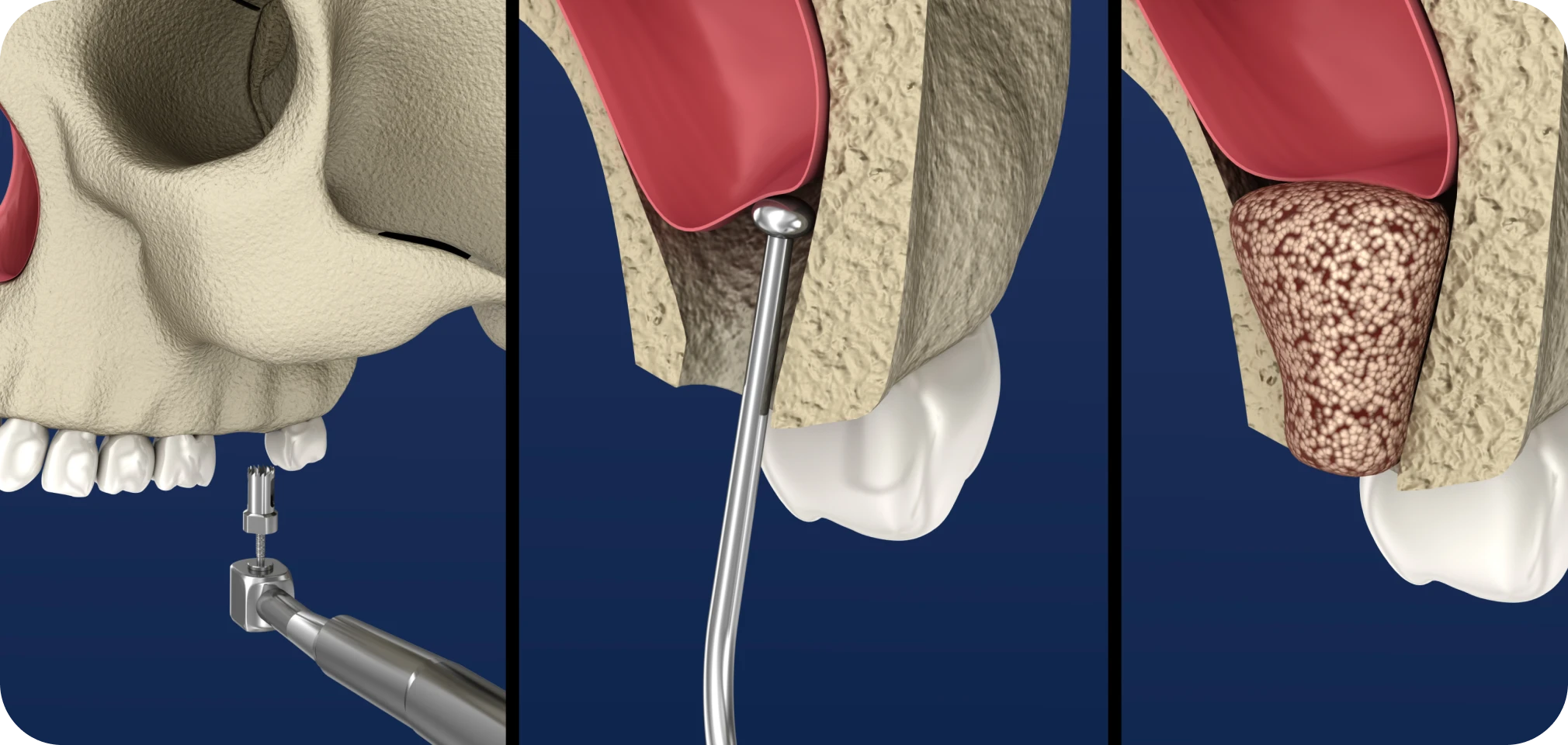Oral-sinus communication
Bucco-sinusal communications (CBS) are abnormal passages that form between the oral cavity and the maxillary sinus. These passages can occur as a result of dental extractions, trauma or dental pathology, leading to significant complications if not treated correctly or promptly.
How is oral-sinus communication diagnosed?
When there’s an opening between the mouth and the maxillary sinus, allowing air, fluids and bacteria to pass freely between the two cavities. This can lead to infections, pain, difficulty eating and recurrent sinus problems.

What are the symptoms perceived by patients with oral-sinusal communication?
Most patients can experience these symptoms, either continuously or in episodes:
- Sensation of air or liquid passing between mouth and nose
- Pain in the sinus or dental region
- Purulent nasal discharge
- Persistent bad breath
- Nasal voice (sensation of speaking through the nose)
The main causes of oral-sinusal communication
- Dental extractions: The most frequent cause is the extraction of upper molars, whose roots are close to the maxillary sinus (known as antral roots). Extraction can result in CBS, which often heals spontaneously with appropriate post-operative care.
- Trauma: Facial or dental trauma can damage bone and surrounding tissue, creating a communication gap.
- Dental infections and benign lesions: Infections such as dental abscesses, cysts and apical lesions can thin the bone wall between the roots and the sinus. During surgery, oral-sinus communication is unavoidable.
- Surgical procedures: Certain complex surgical procedures can unintentionally create a communication, as in the case of sinus bone grafts with a thin sinus membrane (smoker, sinus already operated on, etc.).
How to treat oral-sinusal communication?
During the initial consultation, an accurate diagnosis is essential. Dr. Arnaud performs a thorough clinical examination and radiological assessment (CBCT scan) to visualize the communication (size, location) and plan the appropriate treatment.
SBC closure surgery can only be performed if the maxillary sinus is healthy. If the patient has an associated sinus pathology, it is imperative to treat it before surgery, otherwise symptoms may be aggravated and complications may arise.
Dr. Arnaud works closely with ear, nose and throat (ENT) surgeons to refer patients for treatment of associated sinus pathologies.
Repair techniques are varied and depend on the size and age of the communication:
- Vestibular or palatal flap: a piece of gum tissue is moved to cover the opening and promote healing.
- Use of the Bichat ball: the fatty tissue of the cheek is used to seal the communication when it is larger.
- Bone grafts: These are performed as a second step if the patient wishes to replace the tooth with an implant, in order to obtain adequate bone volume for proper anchorage and longevity of the dental implant.